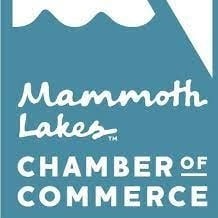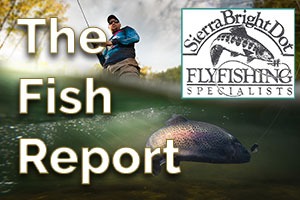 The U.S. Fish and Wildlife Service has kept a public comment period open through November 18th for its proposals to protect Sierra amphibians – frogs and toads. Robert Moler of federal Fish and Wildlife in Sacramento told Sierra Wave that the agency “does not plan to call for a halt to fish planting in upper Inyo-Mono lakes.” Mono Supervisors will deal with this issue at their meeting Tuesday.
The U.S. Fish and Wildlife Service has kept a public comment period open through November 18th for its proposals to protect Sierra amphibians – frogs and toads. Robert Moler of federal Fish and Wildlife in Sacramento told Sierra Wave that the agency “does not plan to call for a halt to fish planting in upper Inyo-Mono lakes.” Mono Supervisors will deal with this issue at their meeting Tuesday.
Fish and Wildlife does want to designate critical habitat areas for two types of yellow-legged frogs and the Yosemite Toad. They are considered an important part of the chain of life in the mountains. Fish and Wildlife has determined that they are endangered and need habitat protection.
Local officials said this would interfere with recreation and tourism. Mr. Moler of Fish and Wildlife said that there would be no interference with recreation. He said that the designation of critical habitat would only mean that a federal agency would evaluate whether any new project, including new fish stocking in Forest boundaries, would result in any impact to critical habitat adverse to the amphibians. If there were a conflict, he said, Fish and Wildlife would work with that federal agency to resolve issues.
As the first item under the regular agenda, the Mono Supervisors will hold a workshop on proposals to list the amphibians as endangered and to designate critical habitat. The Board members will likely provide feedback for developing comments from the County. They will also address the potential listing as endangered of the Bi-State Sage Grouse.
An addendum to the Board agenda addresses approval of a road closure for Digital 395 construction. The closure involves a section of Round Mountain Road between Casa Diablo Road and Owens Gorge Road to allow fiber optic line installation.
Discover more from Sierra Wave: Eastern Sierra News - The Community's News
Subscribe to get the latest posts sent to your email.


















Mr. Moler’s response reinforces the point. Once critical habitat is established, the managing agency is required to manage the area so that it is suitable for the endangered species to expand into the area. Mr. Moler’s agency is quite clear that trout and frog are incompatible. The USFS cannot manage an area for the recovery of the frog by allowing fish to thrive in the area. Its management plans and permitting decisions will have to account for this fact. If the area is essential for the survival of the frog (the basic definition of critical habitat), the fish will inevitably have to go.
Although U.S. Fish and Wildlife will not be the agency to eliminate the fish, their action will make that result inevitable – other federal agencies will have no choice and likely neither will Calif. Fish and Wildlife. It may make some bureaucratic sense for U.S. F&W to deny the effects of its actions (“We’re just drawing a map”), but the effect remains and will have a large impact on the use of these areas and on the economy of the area. Those effects are predictable, and the only chance to evaluate them is before the critical habitat decision is made. It appears the F&W intends to make this decision while denying the effect it will have – to the extent that it will not even do an environmental analysis of the effects.
And the area that would be effected is huge. Eliminating backcountry fishing in the Rock Creek, Bishop Creek, Big Pine Canyon, and Onion Valley areas eliminates a lot of that type of fishing in Inyo County. Sure you will be able to fish in a large lake (but not South Lake or Rock Creek Lake) and the Owens River and lower creeks, but a unique fishery will be gone. It is just cool that from the Owens Valley you can fish for bass in the southern Owens river in the morning and hike into the mountains and fly fish for trout in the backcountry in the afternoon. That will be lost.
And the saddest part is that this huge area is not essential for the survival of the frog. Calif F&W and the USFS are recovering populations of the frog in diverse areas without taking entire drainages. The proposed map is not inevitable, but if the people who live here don’t care and don’t make themselves heard, it will happen.
“It is just cool that from the Owens Valley you can fish for bass in the southern Owens river in the morning and hike into the mountains and fly fish for trout in the backcountry in the afternoon. That will be lost.”
That isn’t even close to being true. You talk like those places are the only areas to fish. The invasive trout has done enough damage and it’s time to correct the damage that’s been done.
Get rid of the fish and you’ll get rid of the fishermans trash.
There are plenty of other lakes and streams to fish other then Big Pine Creek and RCL.
A critical habitat designation must affect fish stocking and management in the upper lakes (or in South Lake and Rock Creek lakes that are included in the proposal). By definition, critical habitat is habitat that is essential for the frog. Fish and Wildlife’s own rule states that fish are incompatible with frogs – trout dine on the critters. You cannot manage lakes for frog habitat by putting fish in them, or even allowing fish to remain. If the land management agency (USFS) is bold enough to allow placing fish in designated critical frog habitat, they would loose the resulting lawsuit. Critical habitat is the equivalent of a no fishing zone, or more accurately a no fish zone. If this proposal is adopted as proposed, say good-bye to fishing in Rock Creek Lake and Little Lakes Valley, South Lake and the canyon above, Big Pine Creek above the old lodge, and the back country above Onion Valley.
The shame is that there is room for the frog and the fish, but the proposed rule does not recognize this. Calif F&G has cleared several lakes high in watersheds of fish and brought the frog back. There is no reason that critical habitat could not be limited to a few necessary lakes high in various watersheds and fishing be left alone in the remainder of the lakes.
Randy, I will forward your comment to Mr. Moler of Fish and Wildlife and get his response. Thanks much for the thoughts and info,
Benett
Randy, Here is Robert Moler’s response. I did email him back to get him to specifically respond to South Lake and Rock Creek Lake. It sounds like the Forest Service will play a role on this. Benett
UPDATE: To the direct question about the two lakes, Mr. Moler said: I cannot say at this point. Each activity is thoroughly evaluated on a case-by-case basis at the time the federal agency consults with the Service.
Randy,
Thanks for your message and opportunity to respond. I think there may be some confusion between a critical habitat designation and how federal land managers manage their lands with respect to a critical habitat designation. There is an important difference.
As you know, critical habitat identifies the geographic areas that contain features essential for the conservation of a threatened or endangered species. It has bearing on activities that are authorized, funded, or carried out by a federal agency. If any activity, (like fish stocking), has federal agency involvement, then that federal agency will work with the Service regarding that project.
The purpose of this federal agency cooperation is so that the Service can assist the federal agency in ensuring that the proposed action will not destroy or adversely modify the species’ critical habitat, i.e. affect it to such an extent that it will not be able to provide for the conservation of the species. In those rare cases where it’s determined that a proposed action would be likely to destroy or adversely modify critical habitat, the Service will work with the federal agency to modify the project to avoid this outcome.
The Service is already working closely with the U.S. Forest Service regarding the conservation of these frogs. The U.S. Forest Service is ultimately responsible for land management decisions within their jurisdiction.
Not sure if this was helpful to you. If you want, please give me a call if you need further clarification.
Thank You,
Robert Moler
Assistant Field Supervisor for External Affairs
Sacramento Fish and Wildlife Office
U.S. Fish and Wildlife Service
Department of Interior
robert_moler@fws.gov
916.414.6606